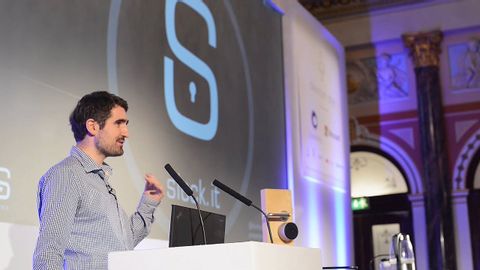
字幕與單字
Slock.it DAO在Devcon1的演示:物聯網+區塊鏈。 (Slock.it DAO demo at Devcon1: IoT + Blockchain)
00
Chris Lyu 發佈於 2021 年 01 月 14 日收藏
影片單字
contract
US /'kɑ:ntrækt/
・
UK /'kɒntrækt/
- v.t./i.染上(疾病等);合意;同意;萎縮;減少...的數量;縮寫
- n. (c./u.)合約;殺人合約
A1 初級多益初級英檢
更多 使用能量
解鎖所有單字
解鎖發音、解釋及篩選功能
